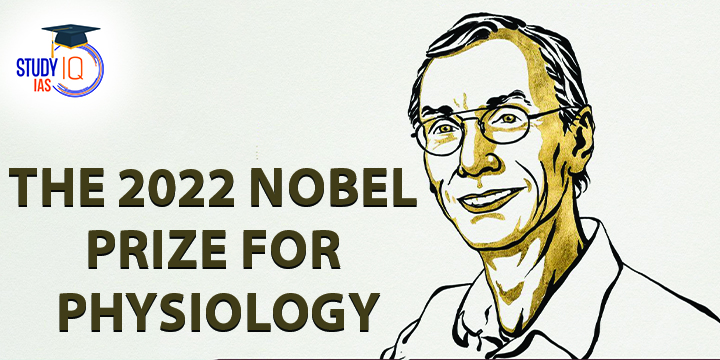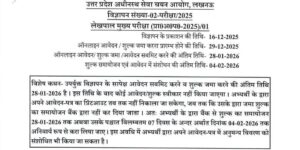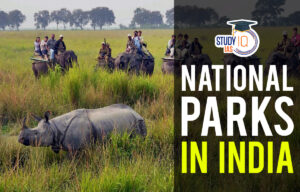Table of Contents
The Nobel Prize for Physiology: About the Nobel Prizes
- The will of the Swedish scientist Alfred Nobel established the five Nobel prizes in 1895.
- The Nobel Prizes are a set of recognition given to fields of Chemistry, Literature, Peace, Physics, and Physiology or Medicine.
- Awarding Institutions:
- The Royal Swedish Academy of Sciences for the Nobel Prize in Physics and Chemistry.
- Karolinska Institute for the Nobel Prize in Physiology or Medicine.
- The Swedish Academy for the Nobel Prize in Literature.
- A Committee of five persons to be elected by the Norwegian Parliament (Storting) for the Nobel Peace Prize.
- In 1968, the Sveriges Riksbank established the Sveriges Riksbank Prize in Economic Sciences in Memory of Alfred Nobel.
- The Royal Swedish Academy of Sciences was given the task to select the Laureates in Economic Sciences starting in 1969.

The Nobel Prize for Physiology: Key Highlights of Svante Pääbo’s Research
- Sequencing the Neanderthal genome: He was able to sequence the genome of Neanderthal, a species of humans that existed on the earth and went extinct around 30,000 years ago.
- A seemingly impossible task: After thousands of years, DNA becomes chemically modified and prone to fragmentation and contamination. But Pääbo managed to sequence a region of mitochondrial DNA from a 40,000-year-old piece of bone.
- Implication: A comparison of the genome sequencing with the contemporary humans showed that Neanderthals were genetically distinct. Also, Pääbo concluded that a gene transfer had occurred from Neanderthals to Homo sapiens following the migration out of Africa around 70,000 years ago”.
- The sensational discovery of a new hominin ‘Denisova’:
- Pääbo’s team sequenced a genome from 40,000-year-old fragment from a finger bone that was discovered in the Denisova cave in the southern part of Siberia.
- The results: the DNA sequence was unique when compared to all known sequences from Neanderthals and present-day humans.
- This led to the discovery a previously unknown hominin, which was given the name Denisova. (Hominins are extinct members of the human lineage.)
- The research showed that gene flow had also occurred between Denisova and Homo sapiens. This relationship was first seen in populations in Melanesia and other parts of South East Asia.
The Nobel Prize for Physiology or Medicine: Significance of Svante Pääbo’s Research
- Physiological relevance: The research helps in understanding the influence of archaic genes our extinct relatives on the physiology of present-day humans.
- One such example is the Denisovan version of the gene EPAS1, which confers an advantage for survival at high altitudes and is common among present-day Tibetans.
- Other examples are Neanderthal genes that affect our immune response to different types of infections.
- Paleogenomics: Dr. Pääbo’s research has resulted in the rise of a new scientific disciple called paleogenomics, which is the study and analysis of genes of ancient or extinct organisms.
- Understanding of Homo sapiens:
- Homo sapiens is characterized by its unique capacity to create complex cultures, advanced innovations and figurative art, as well as by the ability to cross open water and spread to all parts of our planet.
- Pääbo’s work of sequencing the genomes of our extinct relatives will help in understanding the differences between several human species with the ultimate goal of explaining what makes us uniquely human.
What is Genome Sequencing?
- About: Genome sequencing is figuring out the order of DNA nucleotides, or bases, in a genome—the order of As, Cs, Gs, and Ts that make up an organism’s DNA. The human genome is made up of over 3 billion of these genetic letters.
- Use: It is are increasingly used in healthcare and research to identify genetic variations.
- Techniques: Major genome sequencing methods are the clone-by-clone method and the whole genome shotgun sequencing.
- The clone-by-clone method of sequencing works well for larger genomes like eukaryotic genomes but it requires a high density genome map.
- Whole genome shotgun (WGS) sequencing does not require a genome map.


 UP Lekhpal Notification 2025 Out: Apply ...
UP Lekhpal Notification 2025 Out: Apply ...
 List of National Parks in India 2025, Ch...
List of National Parks in India 2025, Ch...
 Bihar BPSC 70th Mains Result 2025 Out: C...
Bihar BPSC 70th Mains Result 2025 Out: C...

























